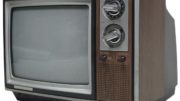It’s not new, but people are still finding our Xtreme Signal HDB8X antenna. It’s one of our most popular products, and it’s sold at several stores throughout the web. Of course, we sell it at Solid Signal too. People like the HDB8X because it has the greatest features of much more expensive antennas, but at a great price.
Pointing in different directions
One of the neat features of HDB8X is an articulating hinge structure. Each half of the antenna can swivel a full 90 degrees meaning that the antenna can, yes, point in two different directions. If you’re halfway between Chicago and Milwaukee, you’re covered even if they’re on totally opposite sides.
This works because a unique bit of engineering that puts each bay (essentially each side is its own HDB4X antenna) far enough away from center that it can swivel without hitting the main structure. Other antennas do something similar, but without the design that lets us keep the price down.
There’s also the specially designed combiner that lets you point both sides in the same direction without causing problems or interference.
Two directions doesn’t mean all directions, though
I wish I could tell you that the HDB8X got signal from all directions. Each panel of the antenna has a beam width of about 60 degrees. That means that if the panels are pointed completely away from each other, they cover about a third of the sky in total. Clever aiming can help you get the most out of this limited space. Remember that because the beam is so wide you don’t have to aim directly at a tower. You can aim quite a bit off and still get great signal.
What if you need to get signals from “everywhere?”
As I demonstrated in an article from last year, it’s not really the best idea to try to combine HDB8X antennas. You would need a total of 7 panels — three HDB8X and one HDB4X — in order to get the entire sky. The amount of loss from combining them would cancel out most of the gain of the antenna.
Instead, try an omnidirectional antenna. Omnis are designed to get the same signal level from all directions. Generally that means giving up some range, since the antenna would have to be truly massive in order to get the same range as one of our directional antennas. Antop’s UFO is the reigning king of omnis, though, with a built-in amplifier design that can help you get signal from up to 60 miles depending on how it’s installed.
Omnis are a better choice for people who really do have signals coming from all directions. Another option, if you really want to get serious, is the use of multiple antennas. Here’s an article that can help you understand how to use two or three antennas to cover a large part of the sky. Of course you’d have to put up two or three antennas and not everyone wants to do this.




